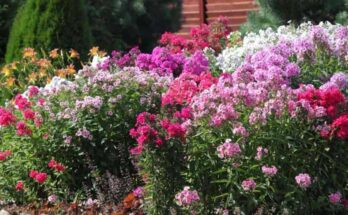Overwatering. It is one of the most common causes of all sorts of problems for Philodendron plants. It could be why you see Philodendron leaves turning yellow.
Yellowing leaves, gnat infestations, brown spots, mushy stems, root rot, and more start with overwatering. When you see yellowing Philodendron leaves, the first thing to do is check the soil. If the soil is soggy, withhold water.
Generally speaking, you should not water your Philodendron until the top quarter of the soil is quite dry. Then you should water thoroughly.
In most cases, this soak and dry watering method (along with judicious pruning of yellow leaves) will solve your yellowing leaves problem.
What if your soil is not soggy? What if your watering method is fine? What could be causing your Philodendron leaves to turn yellow?
This article discusses all the reasons for chlorosis in Philodendron leaves and provides tips and advice to help you deal with this common problem. Read on to learn more.
Top Tips And Tricks For Dealing With Yellowing Philodendron Leaves
1. Yellowing Leaves May Not Be A Problem
When leaves mature and age, they naturally turn yellow and fall off
If your plants’ older, larger (and especially lower) leaves are yellowing, and your plant is also producing healthy new leaves, you have nothing to worry about.
Simply clip off the yellowed leaves and prune your plant to enhance its shape.
Should you always prune off yellow leaves?
Yes, yellow leaves will not recover. They just drain energy from the plant and set up a potential habitat for fungus and bacteria.
Trim them off with a sharp, clean-cutting implement.
2. Too Little Water Can Cause Yellow Leaves
As we’ve said, overwatering is the most common cause of yellow leaves in houseplants, but underwatering can also cause problems.
A thirsty plant will reroute water from the leaves to the roots in an attempt to survive. This causes leaves to wilt, yellow, and eventually turn brown and die.
If you check your soil and find it dry, provide a good, deep watering. Trim off yellowed and damaged leaves.
Be sure to water thoroughly again when the top quarter of the soil is dry.
How do you provide thorough watering?
With a philodendron, you can place the plant in the sink or in the shower and give it a gentle drenching until water runs through the drainage holes in the bottom of the pot.
It’s also possible to water from below by setting the plant in a bucket or bowl of water and allowing it to soak up as much water as possible.
Just be sure to remove it from the soak within half an hour to avoid overwatering. Never let your plant stand in water for an extended period.
3. Your Humidity Level May Be Too Low
Even if your watering schedule is perfect, the air around your philodendron may be too dry.
When this is the problem, you’ll notice that the edges of all of your plant’s leaves are beginning to turn brown.
In addition, all of the leaves may get droopy and begin to yellow.
There are three ways to fix this problem:
- Set your plant on a tray filled with pebbles or marbles and pour a bit of water at the bottom of the tray.
- Use a humidifier to keep the general humidity in the room at 60-70%.
- Mist your plant with water daily.
The humidifier will provide the best and most consistent results of these three choices.
4. Your Plant May Not Be Getting The Right Kind And Amount Of Light
Most houseplants do well with bright, indirect sunlight.
Too little light can cause yellowing due to a lack of chlorophyll production. Too much direct light can cause scorching and burning of the leaves.
Your philodendron will be happy in a setting that provides consistent warmth and 6 to 8 hours a day of bright, indirect sunlight.
Should a philodendron sit right in the window?
Your philodendron can hang or sit close to an eastern window where it will get morning sun.
If your only choice is a western or southern window, set the plant a couple of feet away from the window so that it will not be exposed to direct, scorching sunlight.
You may also want to put a sheer curtain in place if the sun’s rays are very harsh.
5. Your plant May Be Hungry
Philodendrons are not especially heavy feeders, but if your plant has been in the same pot for a long time or you do not fertilize regularly, you may notice that the leaf veins turn yellow, and then the rest of the leaf follows suit.
When this happens, it’s time to either provide a feeding with a good, general purpose, balanced household plant fertilizer or repot the plant into all-new, good quality soil.
6. Overwatering Can Cause Root Rot
If you are in the habit of overwatering, you are setting up a great environment for fungal growth.
Once fungus sets in, root rot is inevitable. This will manifest as brown, mushy stems and yellowing leaves that quickly become soft and brown.
To determine the extent of root rot damage, you’ll need to do the following:
- Repot the plant.
- Examine the roots for damage and prune away soft, mushy, rotten roots
- Allow the plant to sit in the open air overnight so the remaining roots can dry.
- Repot in a completely clean, sterile pot with brand new soil.
- Withhold water for a few days.
- Add an anti-fungal product to the water for the first watering.
- Employ soak and dry watering moving forward.
7. Your Plant May Be Hosting Unwanted Guests
If pests such as spider mites, scale, aphids, or mealy bugs have set up shop in your plant, yellowing leaves will be one of your plants’ signs of distress.
Luckily, these intruders are unlikely to get a foothold on a healthy plant, so if you follow the advice presented here for watering, fertilizing, light and soil, you’ll be unlikely to encounter houseplant pests.
If you have a problem with pests, here’s what you need to do:
- Isolate the affected plant(s).
- Prune away badly damaged foliage.
- Give your plant a good wash and spray with a commercial pest spray.
- Or make your own using a quart of water and a cup of white vinegar.
- You can also create a soil drench consisting of a gallon of water and a teaspoonful of Neem oil.
- Use this to water your plants for the next month or so to prevent re-infestation.
If the infestation is heavy, you should also repot the plant in a clean or sterilized pot with all-new potting soil.
Will plant pests affect all of my plants?
Generally speaking, healthy plants will deflect plant pests. Even so, if you find any evidence of pests, it’s a good idea to clean your plant area thoroughly with a disinfectant solution as a preventative step.
Well Cared For Philodendrons Are Virtually Trouble Free
Philodendrons are easy-care plants, so if you just provide consistent, basic care, you are unlikely to encounter yellowing leaves or any other problem with them.
Overall, your philodendron needs these nine basics.
- Use a good quality of light, airy potting mix—philodendrons like a potting mix that is soil based and rich in organic matter.
- Adjust your watering schedule to suit the season by watering more in the spring and summer and tapering off in the autumn and winter.
- Fertilize sparingly during the growing season and withhold fertilizer in the autumn and winter.
- Avoid overwatering and underwatering by establishing a regular soak and dry watering schedule.
- Keep your philodendron warm, away from cold windows and out of hot or cold drafts.
- Provide a stake or trellis to prevent your plant from falling over or rambling uncontrollably.
- Position your plant to suit the season by moving it to catch just the right amount of light.
- Prune your plant and repot annually in the early springtime.
- Use cuttings to grow new plants either in soil or in water.
It’s easy to see that there are lots of reasons why a Philodendron might develop yellow leaves.
Some are problematic, and some are just the normal course of growth.
By providing regular, consistent care for your plant, you can confidently expect and cope with the simple aging of leaves and prevent and remedy problematic yellowing.
The tips and advice presented here will help minimize and manage Philodendron leaves turning yellow.
Source link
Originally posted 2022-08-23 15:21:53.





